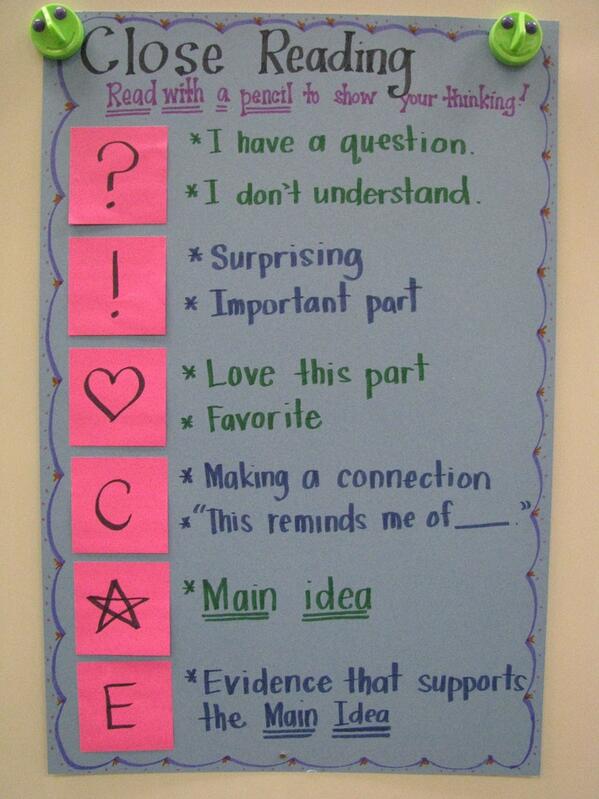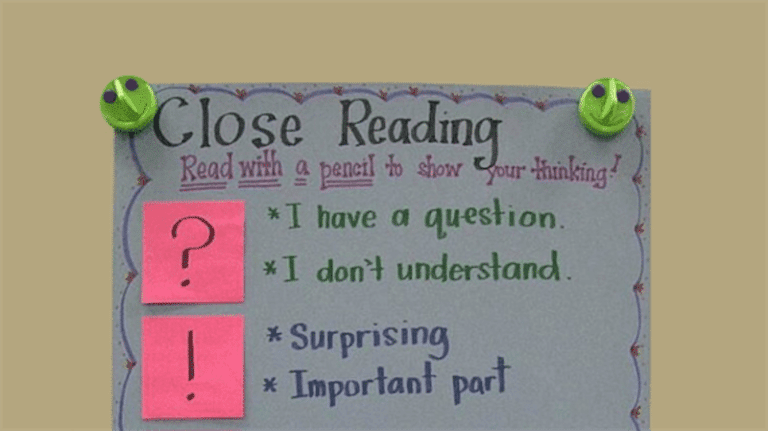Annotation is one of those skills that I don’t ever remember learning, even though I use it all the time. Perhaps that’s why it’s one of the most challenging aspects of close reading to teach—we’re teaching students how to do something that we want them to do “right” and have ownership over.
So, how do we get kids to (authentically) record their thinking while they read? And how do we get them to go back and use their annotations once they’re done?
Here are four ways to build annotation into your close reading lessons:
Start With Common Marks
It’s helpful for students to start somewhere. As you plan close-reading lessons, choose which marks you want students to know how to use consistently and teach those.

Connect Annotation to the Purpose
Close reading is all about reading for purpose. When students annotate, they should be finding information that aligns with why they’re reading and what they’re going to do with the text after they’ve finished. If they’re annotating to get a good grade or because you “told them to,” it’s not a practice that will be useful or a habit that will stick. (Teaching the Core goes more in-depth into purposeful annotation in this post.)
Grade the Thinking, Not the Writing
Annotation should leave a trail of student’s thinking. As you review student annotation, make sure that students are showing you what they are thinking. If you can’t pull out what they saw as the most important aspects of a reading, then they weren’t effective, regardless of which marks they used.
Here is an example of a rubric and student samples, and another (more simple) rubric from The Joy of Teaching blog.
Use Student Examples
As students start to internalize the practice of annotating, encourage them to share their annotation experiences. Have them talk about:
- What were they thinking when they made each annotation?
- How did their annotations help them during writing or discussion?
- What will they keep doing in the future? And what will they stop doing?
How do you teach annotation? Leave suggestions and ideas in the comments!

